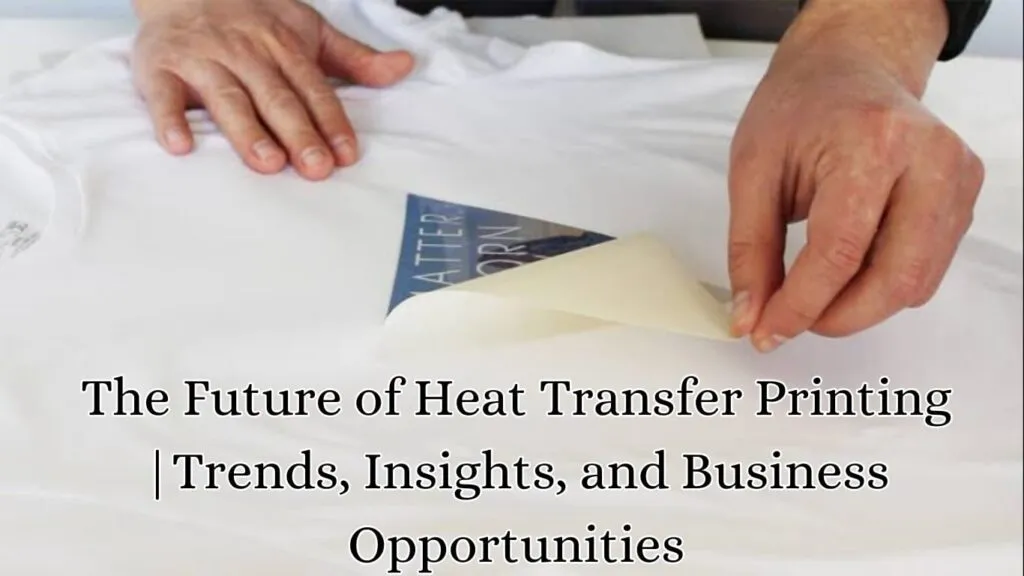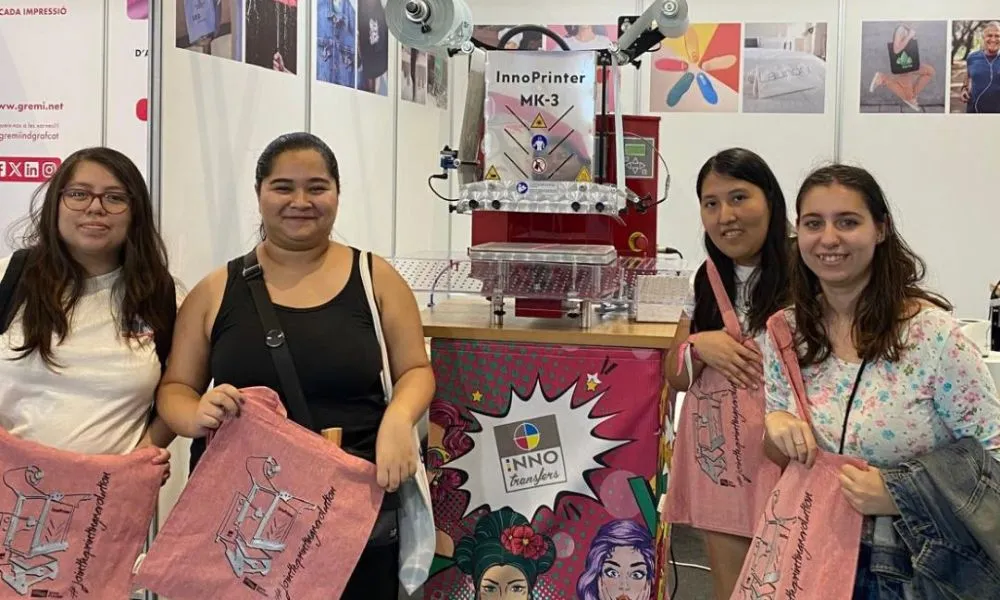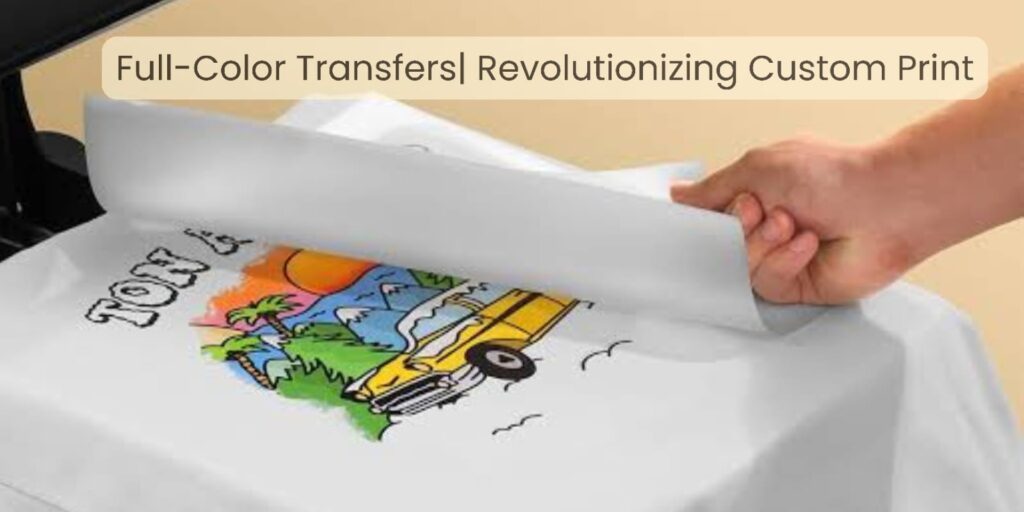
Why Heat Transfer Printing?
Heat transfer printing has evolved from a functional technique to a mainstream method for customizing textiles and other materials. As businesses seek to meet consumer demands for personalization with sustainability, the future of the heat transfer printing industry is adapting and innovating. This article delves into the key trends shaping the future of heat transfer printing, offering insights into potential business opportunities.
Recent Trends in Heat Transfer Printing
1. Personalization & Customization
With increased consumerism, people are asking for more personalized products as a form of self-expression. This can be done within the textile industry using the future heat transfer printing technique. Businesses capitalizing on such demand will find themselves in a very lucrative market segment. Other examples of firms that have grown to success due to facilitating a means for their users to make personalized designs on various products include Printful and Teespring.
2. Innovative Material for Sustainability Initiatives
As environmental awareness grows, so is the demand for sustainable practices in the future of heat transfer printing. Companies look forward to eco-friendly ink and materials that can reduce carbon footprint and ecological impact, appeal to the increasing green consciousness of consumers, EU Green Deal, and meet regulatory threshold standards. This way, renowned brands and companies like Innotransfers can gain better market positions and wider client loyalty. There is an increasing demand for biodegradable and recyclable materials. Maximum companies are trying to use water-based inks that release fewer toxic fumes during production.
3. Technological Advancements & Direct-to-Film (DTF) Printing
Improvements in future heat transfers printing technology are enhancing heat transfer printing’s effectiveness. Digital methods enable higher resolution and faster production, helping businesses meet demand while ensuring quality. A key innovation is Direct-to-Film (DTF) printing, which delivers vibrant colors and detailed designs on various fabrics, overcoming limitations of traditional techniques like color matching and fabric compatibility.
4. Integration with E-commerce Become a Future of Heat Transfer Printing
E-commerce has transformed the attractive way consumers buy personalized products. Innotransfers that use heat transfer printing and e-commerce sites can increase order completion and exposure to a larger market. Ease of personalization leads to an enhanced customer experience. Print-on-demand services, which are gaining traction, enable businesses to offer a wide range of products without inventory, reducing financial risks and enabling them to keep up with consumer trends much faster.
5. Smart Technologies & Automation in Production
Advanced technologies integrated into the future of heat transfer printing enhance production efficiency. IoT devices and smart sensors enable real-time monitoring of equipment, reducing downtime and allowing for workflows to be optimized. Furthermore, automation streamlines operations by performing repeated tasks and helping human resources with more precise and creative tasks related to design and marketing.
Heat transfer printing is usually time-consuming for bulk production, as each item is pressed individually, sometimes manually. Large-area designs might not be ideal due to the problems associated with uneven transfers.
The future of Heat transfer printing offers an unrivaled combination of low cost, design flexibility, high output quality, completion speed, ease of use, and eco-friendly alternatives with their high-quality technology.
Most small business owners are looking to customize products for clients, an individual who wants to make exclusive gifts, or a designer who wants to use this new path of creativity. A company like Innotransfers enables one to convert an idea into reality easily and effectively.
Market Opportunities & The Future of Heat Transfer Printing
1. Textile Industry Growth
Innovation-related growth is seen in the textile industry due to the demand for customized apparel. Heat transfer printing has a big role in such evolution, whereby businesses can now offer products on demand according to consumer preference. Companies that have invested in heat transfer technology could capitalize on the expanding market. The rise in athleisure and activewear presents a great opportunity for a heat transfer printing business. Since consumers tend to focus on comfort and style, customization options within this category could increase sales.
2. Gifts & Event Merchandise
The emerging niches provide unique opportunities for businesses specializing in the future of heat transfer printing. Examples are event merchandise, promotional products, and personalized gifts. Targeting these niches will increase revenue streams. These events require personalized apparel or any other promotional material, from weddings to corporate events to festivals. Quality-oriented printing of event-specific merchandise by heat transfer printing will make that business the one to supply such merchandise.
3. Collaboration with Designers
Integrating fashion designers and artists can enhance the product offerings of heat transfer printing companies like Innotranfers. Businesses sharing with creative designers can develop unique designs that attract customers looking for special merchandise.
Coming up with limited edition collections in collaboration with artists or influencers can stir interest in a brand while creating urgency to buy into the exclusivity.
4. Global Market Expansion
With globalization, businesses can expand beyond local markets since it continues to shape the consumption trend. Heat transfer printing can make this process easier by providing products that can be customized to resonate with diverse audiences.

Industry Challenges
Competition
With more players coming in to conduct business, the competition increases. Companies will have to be different concerning quality, innovation, customer service, or offering something for which there is no alternative.
Quality Control
Satisfying the customer requires consistency in quality for various batches of products being created. Strict quality controls as the scaling up of a product is realized.
Keeping Technology at Bay
Keeping technology at par calls for additional investment in continual training and equipment upgrades. Competitiveness requirements call for quick adaptation and training to handle the company’s upcoming improvements.
Conclusion
It is innovative, personalized, and green, which characterizes the bright future of heat transfer printing. With a vision for emergent trends, exploring new market opportunities could set an enterprise in place to conquer success in the face of continuous evolution.
In other words, heat transfer printing is at the threshold of radical changes answering emerging consumer trends and technological changes. Those companies will be better positioned to thrive in this dynamic environment, focusing on personalization, sustainability, and technology integration.


